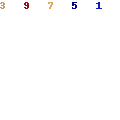If you've followed the steps to connect your Mac to a Wi-Fi network, but the connection to your network or the Internet isn't reliable, the steps in this article might help.
Check for Wi-Fi recommendations
When your Mac tries to connect to a Wi-Fi network, it checks for issues that affect its ability to create a fast, stable, and secure connection. If an issue is detected, the Wi-Fi status menu in the menu bar shows a new item: Wi-Fi Recommendations. Choose it to see recommended solutions.
Wi-Fi recommendations are available in macOS Sierra or later.
Analyze your wireless environment
'The other day I need a another network card for a Power Mac G5 2.7 Dual PCI-X running Tiger 10.4.11 and Xsan 1.4.1. Someone handed me a PC Siig multi-network card called 'FireWire 800+GigaLAN Combo PCI' model number NN-8G0012-S1 - we were using it on our PC and swapped it out for another card.
Your Mac can use Wireless Diagnostics to perform additional analysis.
There's no Books folder in your user directory, and there's no Show in Finder option when viewing downloaded books in the app.The answer is that the downloaded Apple Books location depends on the type of file you're looking for. Using the Apple Books app in macOS (formerly known as ), you can download your Books to your Mac, iPhone, IPad, or other iOS devices for reading offline. But where are Apple Books downloads stored on your Mac? Apple, unfortunately, uses unique identifiers for the file names, so you'll need to use Quick Look to find the books you're looking for.Another issue is that purchased books from the Apple Books Store are protected with Digital Rights Management (DRM), so while you can make backup copies of these files for use in the Books app, you won't be able to open them in other eBook applications like. E books for mac. That's because the Books app allows users to browse and read both purchased books from the as well as compatible files that a user manually adds to the app.Apple Books Location for Purchased BooksFor books that you've purchased from the Apple Books Store and then downloaded to your Mac, you can find them at the following location, opening the Books directory.$ open /Library/Containers/com.apple.BKAgentService/Data/Documents/iBooks/BooksThere you'll find a list of ePUB files for your purchased books.
- Quit any apps that are open, and connect to your Wi-Fi network, if possible.
- Press and hold Option (Alt) ⌥ key, then choose Open Wireless Diagnostics from the Wi-Fi status menu .
- Enter your administrator name and password when prompted.
- The MAC Address Lookup is used to find the real manufacturer or vendor OUI (Organizationally Unique Identifier) of your network card based on your network card MAC address. It also allows you to find MAC address records according to the company name.
- Intel® Wi-Fi 6 (Gig+) Intel® Wi-Fi 6 (Gig+) products support next generation Wi-Fi technology and deliver best in class performance that enables the fastest downloads for PCs, improved streaming, and more responsive gaming, especially as more devices connect to the same network.
- Mac reset network quick fix 10.6 10.7 10.8 reinstall reset delete deleting wifi wi-fi Suggest keywords: Doc ID: 26681: Owner: Jeff W. Group: DoIT Help Desk: Created: 2012-10-03 12:31 CDT: Updated: 2019-02-24 11:36 CDT: Sites: DoIT Help Desk, DoIT Tech Store: Feedback: 29 65 Comment Suggest a new document.
Wireless Diagnostics begins analyzing your wireless environment:
If the issue is intermittent, you can choose to monitor your Wi-Fi connection:
When you're ready to see recommendations, continue to the summary. Wireless Diagnostics asks for optional information about your base station or other router, so that it can include that in the report it saves to your Mac.
Click the info button next to each item in the summary to see details about that item. Wi-Fi best practices are tips that apply to most Wi-Fi networks. Play holdem poker free.

Back up or make note of your network or router settings before changing them based on these recommendations—in case you need to use those settings again.
Monitor your Wi-Fi connection
Your Mac can monitor your Wi-Fi connection for intermittent issues, such as dropped connections. Follow the steps to analyze your wireless environment, but choose 'Monitor my Wi-Fi connection' when prompted.
During monitoring, a window shows that monitoring is in progress. Monitoring continues as long as this window is open and you're on the same Wi-Fi network, even when your Mac is asleep.
If Wireless Diagnostics finds an issue, it stops monitoring and shows a brief description of the issue. You can then resume monitoring or continue to the summary for details and recommendations.
Create a diagnostics report

Wireless Diagnostics automatically saves a diagnostics report before it displays its summary. You can create the same report at any time: press and hold the Option key, then choose Create Diagnostics Report from the Wi-Fi status menu . It can take your Mac several minutes to create the report.
- macOS Sierra and later saves the report to the /var/tmp folder of your startup drive, then opens that folder for you.
To open the folder manually, choose Go > Go to Folder from the Finder menu bar, then enter /var/tmp. - OS X El Capitan or earlier saves the report to your desktop.


Back up or make note of your network or router settings before changing them based on these recommendations—in case you need to use those settings again.
Monitor your Wi-Fi connection
Your Mac can monitor your Wi-Fi connection for intermittent issues, such as dropped connections. Follow the steps to analyze your wireless environment, but choose 'Monitor my Wi-Fi connection' when prompted.
During monitoring, a window shows that monitoring is in progress. Monitoring continues as long as this window is open and you're on the same Wi-Fi network, even when your Mac is asleep.
If Wireless Diagnostics finds an issue, it stops monitoring and shows a brief description of the issue. You can then resume monitoring or continue to the summary for details and recommendations.
Create a diagnostics report
Wireless Diagnostics automatically saves a diagnostics report before it displays its summary. You can create the same report at any time: press and hold the Option key, then choose Create Diagnostics Report from the Wi-Fi status menu . It can take your Mac several minutes to create the report.
- macOS Sierra and later saves the report to the /var/tmp folder of your startup drive, then opens that folder for you.
To open the folder manually, choose Go > Go to Folder from the Finder menu bar, then enter /var/tmp. - OS X El Capitan or earlier saves the report to your desktop.
The report is a compressed file with a name that begins 'WirelessDiagnostics.' It contains many files that describe your wireless environment in detail. A network specialist can examine them for further analysis.
Use other diagnostics utilities
Wireless Diagnostics includes additional utilities for network specialists. Open them from the Window menu in the Wireless Diagnostics menu bar:
- Info gathers key details about your current network connections.
- Logs enables background logging for Wi-Fi and other system components. The result is saved to a .log file in the diagnostics report location on your Mac. Logging continues even when you quit the app or restart your Mac, so remember to disable logging when you're done.
- Scan finds Wi-Fi routers in your environment and gathers key details about them.
- Performance uses live graphs to show the performance of your Wi-Fi connection:
- Rate shows the transmit rate over time in megabits per second.
- Quality shows the signal-to-noise ratio over time. When the quality is too low, your device disconnects from the Wi-Fi router. Factors that affect quality include the distance between your device and the router, and objects such as walls that impede the signal from your router. Learn more.
- Signal shows both signal (RSSI) and noise measurements over time. You want RSSI to be high and noise to be low, so the bigger the gap between RSSI and noise, the better.
- Sniffer captures traffic on your Wi-Fi connection, which can be useful when diagnosing a reproducible issue. Select a channel and width, then click Start to begin capturing traffic on that channel. When you click Stop, a .wcap file is saved to the diagnostics report location on your Mac.
Learn more
Mac Network Setup
Additional recommendations for best Wi-Fi performance: Canon capt for mac.
Network Card For Mac Mini Download
- Keep your router up to date. For AirPort Time Capsule, AirPort Extreme, or AirPort Express Base Station, check for the latest firmware using AirPort Utility. For non-Apple routers, check the manufacturer's website.
- Set up your router using Apple's recommended settings, and make sure that all Wi–Fi routers on the same network use similar settings. If you're using a dual-band Wi-Fi router, make sure that both bands use the same network name.
- Learn about potential sources of Wi-Fi and Bluetooth interference.
Learn about other ways to connect to the Internet.

